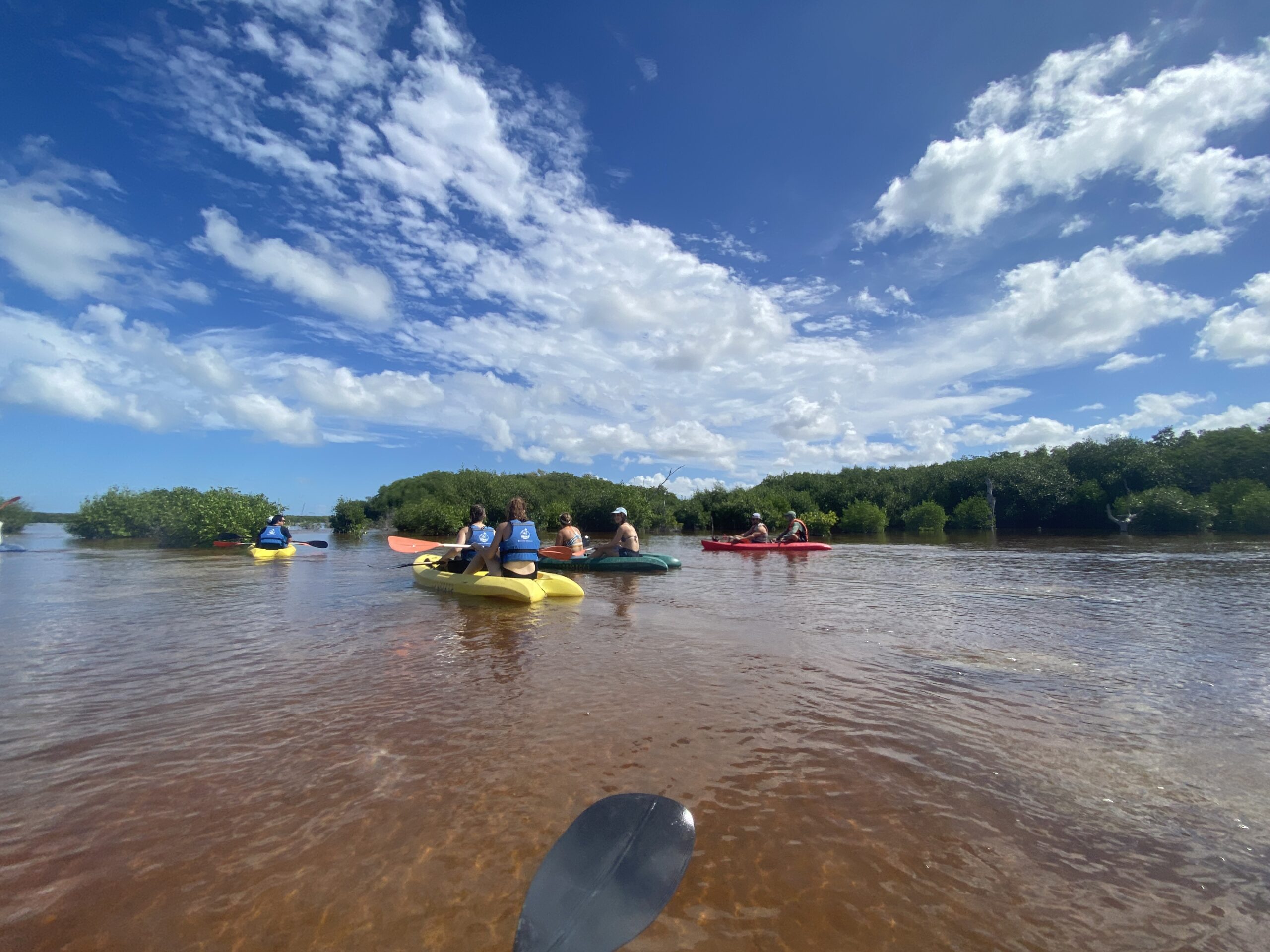
A new town and a new fear
This weekend, the IFSA program sponsored a trip for us to Sisal, a coastal town in northern Yucatan, known for its protected biodiversity. This trip was a backup plan because our original trip to Las Coloradas, a pink lake with salt water, was canceled due to bad weather. Regardless, our time at Sisal was wonderful! We were able to kayak through shallow mangroves and see the different plant species that grow in those waters, as well as swim in a pool of sweet water in the middle of the short-treed forest. What fascinated me the most was learning about how nature works to tend its inhabitants. The two main trees of the regions are almost always found growing right next to each other because one of them can cause semi-permanent rashes/scarring but the other one can heal this reaction! The small mammals, reptiles, and birds (like flamingos!) living in the region also have a variety of fruits and plants to feed off, which is why it is important that these forests are kept conserved.
One of our tour guides shared with us how big hurricanes have caused the region’s turtles to flee their habitat. As a southern California native, hurricanes were not a natural disaster I thought about often. My big fear was (and is) earthquakes, especially because they are not foreseeable. I was uninformed about what hurricanes are and how strong and powerful they really are, destroying everything in their path. In my two months in Yucatan, two hurricanes have hit nearby regions – Ian in the Caribbean islands and Julia in Central America. Although these hurricanes didn’t directly impact the Yucatan Peninsula, they did bring along thunderstorms and a lot of humidity. I found myself reading many news articles about these storms’ paths, the damage that they caused, and future forecasts. I even watched a documentary series called Five Days at Memorial, which displayed the intense events at Memorial Hospital in New Orleans after Hurricane Katrina, a category five hurricane, hit the US southern coast in 2005. I learned that even if hurricanes are predictable, unlike earthquakes, they can still destroy people’s homes, leave them without food or water, and even kill. They also cost citizens and governments a lot of money to rebuild from.
To come full circle, the bad weather that the IFSA program directors told us about is a tropical storm in the Gulf of México, a baby hurricane with wind speeds of at least 40 mph! It has brought much rainfall to coastal Yucatecan towns, which has diluted the lake at Las Coloradas, temporarily erasing its attractive pink color. In my research, I learned that climate change is one of the reasons why each year, hurricanes and tropical storms become more common and more powerful (higher temperatures mean warmer water that hurricanes can feed off of). It is important that we pay attention to this dangerous issue as soon as possible, not just for the sake of the animals that live in humid regions near the equator, like Yucatan, but for the people on these lands who are at risk of having their homes, businesses, belongings, and lives destroyed.
